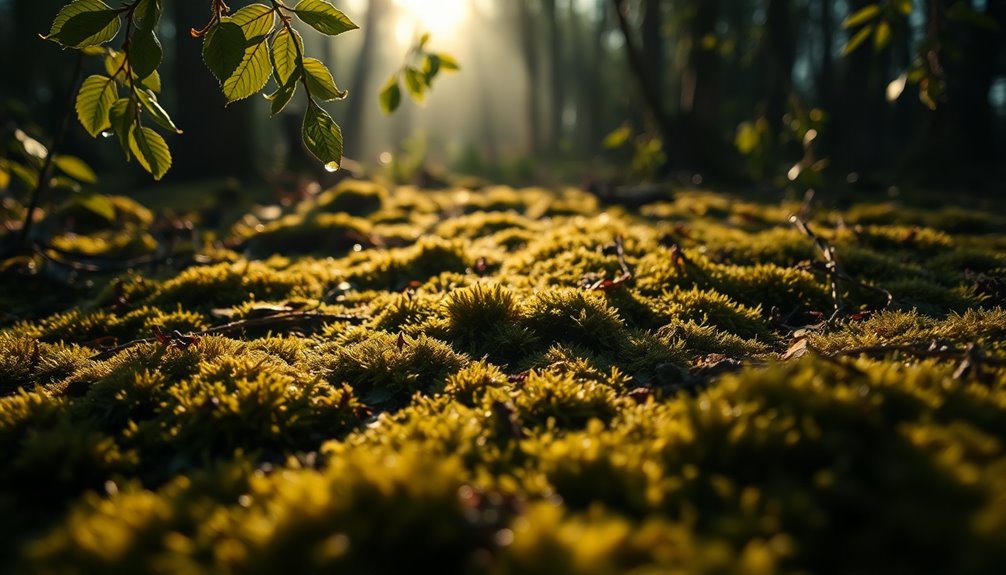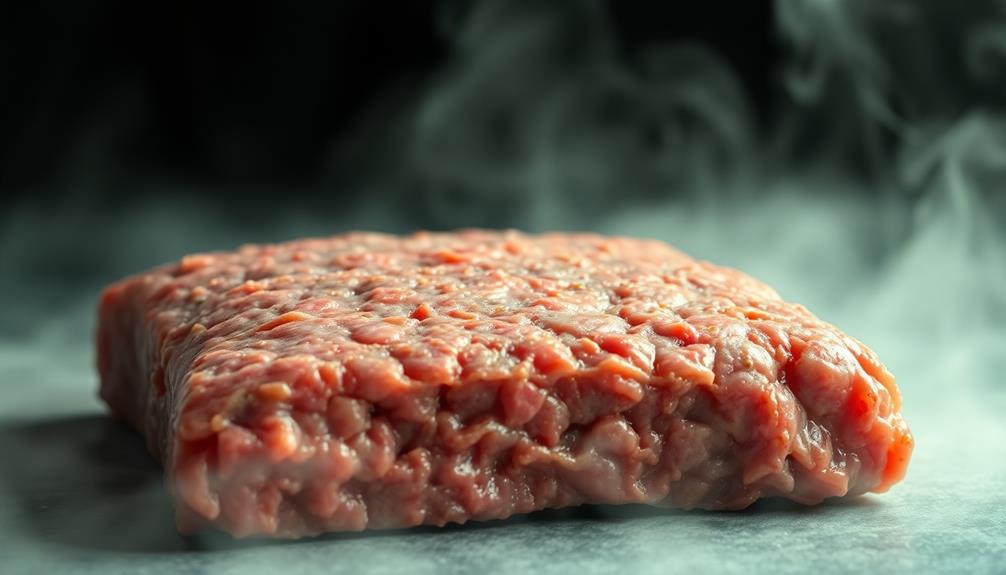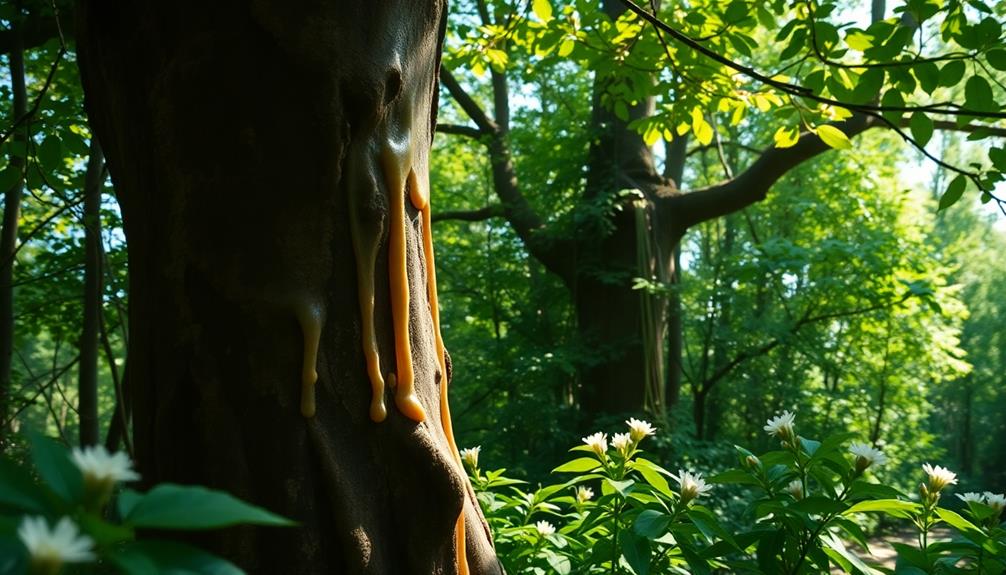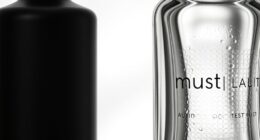Freon, the refrigerant found in air conditioning systems, is actually odorless and colorless in its pure form, much like water! This means you won't catch a whiff of it when everything's working well. However, if there's a leak, you might notice a sweet or chemical smell. That's often from contaminants mixed in, rather than Freon itself. Just remember, if you ever smell something funny near your AC unit, it could be a sign of a leak! It's always good to be aware of your surroundings, so you can stay safe and comfy. Want to know more about detecting leaks?
Key Takeaways
- Pure Freon is colorless and odorless, making it difficult to detect leaks by smell alone.
- Contaminants or byproducts may produce chemical scents resembling sweet or chloroform-like odors.
- Misinterpreting these smells can lead to confusion and delays in necessary repairs.
- Unusual odors near HVAC units or car AC systems may indicate refrigerant leaks.
- Professional leak detection tools are essential for accurately identifying Freon leaks for safety.
Introduction
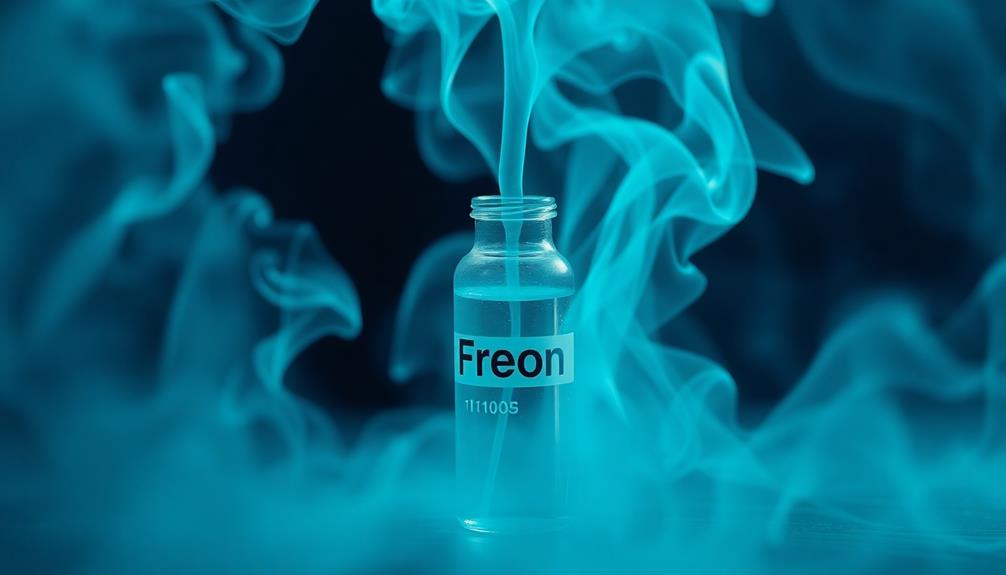
Understanding what Freon smells like is crucial for anyone working with HVAC systems.
Freon is a refrigerant used in air conditioning, but here's the catch: in its pure form, it's colorless and odorless! That means you can't just rely on your nose to detect refrigerant leaks.
Some people say they notice a sweet or chloroform-like scent when Freon leaks, but that might be due to other things mixed in. Isn't that interesting?
This misconception about the Freon smell can make it harder for you to find leaks and keep your air conditioning running smoothly.
You might think you can just sniff around, but you'll need special tools for proper leak detection.
Description of the Smell
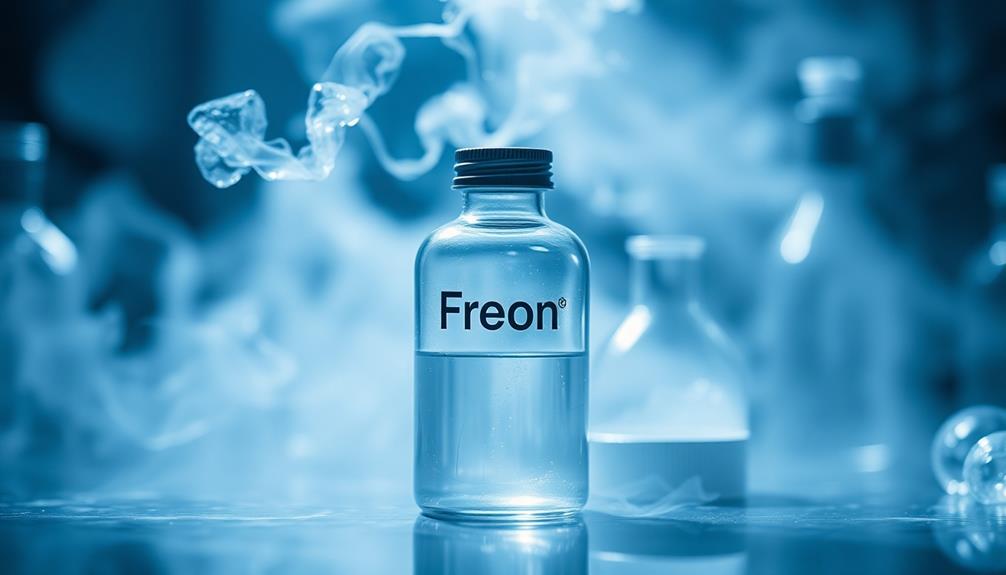
When it comes to identifying the smell of Freon, it's important to know that pure Freon is actually odorless. This can be confusing, especially if you're trying to figure out if there's a refrigerant leak.
If Freon leaks occur, you might notice a distinct smell that resembles something sweet or even a chemical scent, almost like chloroform. This isn't the smell of Freon itself but rather comes from contaminants or byproducts mixed with it. Freon itself is actually odorless, but the substances it interacts with during a leak can produce these noticeable smells. Understanding **what a Freon leak smells like** is essential because inhaling these chemicals can be harmful to your health. If you suspect a leak due to the sweet or chemical scent, it’s important to call a professional to address the issue immediately.
Imagine walking into a room and catching a whiff of something unusual. You might think, "What is that?" That's why it's crucial to recognize that the chemical smell doesn't always mean you're dealing with Freon directly.
Leaks can be sneaky, and misinterpreting these scents can slow down repairs. If you ever suspect Freon leaks, pay attention to your surroundings, as those chemical smells can indicate a problem.
Source and Composition

Freon, a trademarked term for a class of refrigerants, primarily consists of chlorofluorocarbons (CFCs) and hydrochlorofluorocarbons (HCFCs). These are special chemicals that help cool things down in your fridge or air conditioner.
The source of Freon comes from these carefully made compounds, which contain chlorine, fluorine, carbon, and hydrogen. Together, they create a strong mixture that can easily change from gas to liquid, making it perfect for heat absorption.
Now, you might wonder what this means. Well, it means Freon can help keep your home cool without being flammable, which is super important!
Interestingly, pure Freon is odorless, so you won't smell it if there's a leak. Contaminants might create some smells, but the Freon itself won't give off any odor. This is why it's important to use special tools to find leaks instead of relying on your nose.
As we learn more about our environment, many places are switching to friendlier options like hydrofluorocarbons (HFCs) and hydrofluoroolefins (HFOs). These alternatives help keep our planet healthy while keeping us cool!
Typical Scenarios or Environments

Have you ever noticed unusual odors around your air conditioning or refrigeration units? If you have, you might be dealing with a refrigerant leak.
While Freon itself doesn't have a smell, leaks can create sweet or even chloroform-like odors due to contaminants. Imagine standing by your air conditioner and catching a whiff of something that seems off.
In cars, Freon leaks from AC units can smell like burnt chemicals, especially when the engine heats up.
In your home, central air conditioning systems can give off chemical smells that might remind you of cleaning products.
If you're in a commercial kitchen, faint sweet odors from a refrigeration system could confuse you, making you think there's something wrong with the food storage.
Sometimes, especially in small spaces, a refrigerant leak mightn't smell at all. Instead, you could hear hissing sounds as pressure builds up.
If you ever suspect a leak, don't hesitate! Contact customer service for help. It's better to be safe and ensure your air conditioner is working properly, keeping your space comfortable and fresh!
Emotional or Cultural Associations
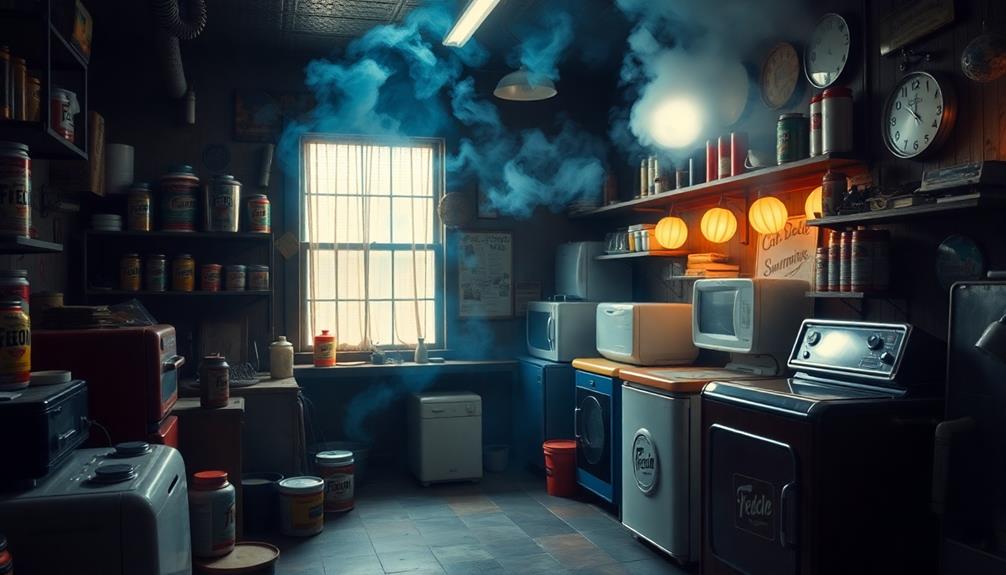
Unusual odors from your HVAC system can trigger a mix of emotions, from confusion to anxiety. You might feel worried if you think there's a Freon leak, as the scent of a leak isn't always easy to spot. Freon itself is odorless, so when you catch a whiff of something strange, it can lead to emotional responses, making you feel uncertain or even scared.
Cultural perceptions play a big role too. Many people associate strange chemical smells with danger and safety concerns. This worry often comes from stories about the environmental impacts of chemicals over the years. People have learned to be cautious, and that can lead to mistrust when it comes to things like air conditioning systems.
But there's some good news! As we move away from Freon to more eco-friendly refrigerants, a positive change is happening. This shift encourages feelings of hope and excitement about protecting our planet.
Health or Safety Considerations
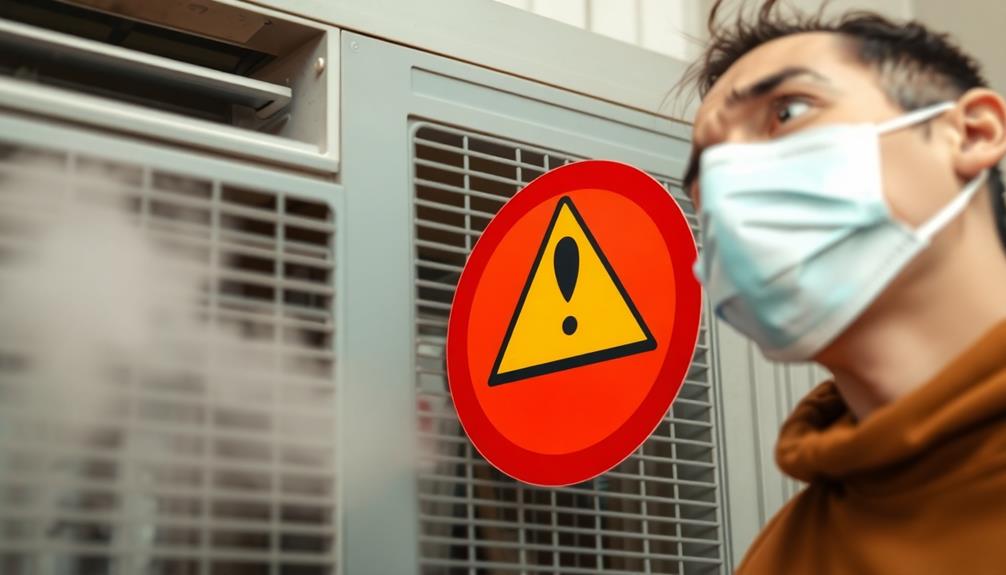
When dealing with refrigerants like Freon, understanding health and safety considerations is crucial. Freon is odorless in its pure form, which makes it tricky to detect a Freon leak. Relying on your nose isn't a good idea! Instead, you should always use professional leak detection methods to keep things safe.
If you breathe in a lot of Freon or touch it, you might face health risks like breathing problems or skin irritation. In really bad situations, being in a poorly ventilated area can even lead to asphyxiation!
That's why proper ventilation is super important when working with refrigerants. It helps to keep the air fresh and makes sure you're not exposed to any harmful fumes.
If you think there's been a significant exposure to Freon, don't wait! Get medical attention as soon as possible to tackle any problems quickly.
Final Thoughts

Understanding the complexities of Freon, especially its odorless nature in pure form, highlights the importance of relying on proper detection methods rather than your sense of smell.
You might think you can smell a Freon leak, but that's not always the case! While Freon can have a sweet or chemical scent when leaking, it can be easily confused with other odors. This makes it tricky to find leaks just by sniffing around.
Using the right tools for leak detection is super important. Imagine having a fun game where you search for hidden treasures, but instead of using your eyes, you need special gadgets!
That's how HVAC maintenance works. Professionals use electronic leak detectors to accurately find Freon leaks, ensuring your home stays safe and comfy.
Frequently Asked Questions
What Does Freon Smell Like When It Leaks?
When Freon leaks, you might notice a sweet or chloroform-like scent due to contamination. However, relying on smell alone isn't reliable, so regular maintenance and professional leak detection are essential for your safety.
How Can You Tell if Freon Is Leaking?
You can tell if Freon's leaking by monitoring your energy bills, checking for insufficient cooling, looking for ice buildup on coils, or noticing unusual sounds or oily residues around your AC unit. Investigate further if you see these signs.
Can Freon Leak Make You Sick?
Yes, a Freon leak can make you sick. You might experience dizziness, headaches, or respiratory issues in poorly ventilated areas. If you notice these symptoms, get fresh air and seek medical attention immediately.
Does Freon Smell Like Nail Polish Remover?
You might think Freon smells like nail polish remover due to its chemical-like scent, but in its pure form, it's odorless. Detecting leaks requires proper methods, as relying on smell can be misleading.


